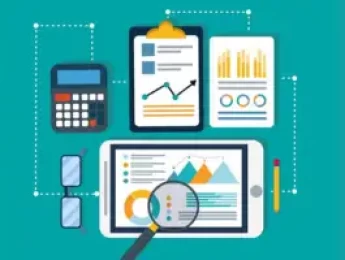Preparation is critical when compiling business financial statements, as it lays the foundation for accurate, transparent, and insightful reporting. The process involves meticulously gathering, organising, and analysing financial data to create comprehensive statements that reflect a business's true financial health.
Thorough preparation ensures compliance with regulatory requirements and aids in making informed strategic decisions. It allows stakeholders, including investors, creditors, and management, to clearly understand the company's performance, profitability, and financial position.
Well-prepared financial statements serve as a reliable tool for assessing the effectiveness of business operations, identifying areas for improvement, and developing future financial strategies. They also enhance the organisation's credibility, fostering trust among stakeholders and facilitating better relationships with external parties.
Before preparing financial statements for your business, you must understand the key components, risk areas, and technologies to provide true and accurate information that will aid positive and beneficial decision-making in the future.
Upon completion of this course, participants will be able to:
- Understand the breakdown of the accounting cycle components.
- Develop a well-structured chart of accounts.
- Execute accounting adjustments, encompassing deferrals and accruals.
- Generate trial balance and adjusted trial balance.
- Illustrate and align charts of accounts with financial statements.
- Compile and present income statements, balance sheets, and cash flow statements.
- Compose notes for the financial statements.
This course is designed for anyone responsible for producing end-of-year financial statements or presenting taxation statements to stakeholders. It would be most beneficial for:
- Business Owners
- Chief Financial Officers
- Financial Managers
- Accountants
- HR Professionals
- Administrators
- Chief Accountants
This course uses a variety of adult learning styles to aid full understanding and comprehension. Participants will review examples of good financial reporting and make comparisons and raise issues with example versions of incomplete reports. They will view videos which discuss the implications of incorrect reporting and work together to understand how to minimise errors.
They will also have the opportunity to review various accounting systems that can help with financial statement creation and learn about the opportunities technology can present when creating a fuller and more accurate reporting document.
Day 5 of each course is reserved for a Q&A session, which may occur off-site. For 10-day courses, this also applies to day 10
Section 1: The Accounting Cycle
- Introduction to the accounting cycle and its stages.
- Recording financial transactions accurately.
- Principles of double-entry bookkeeping.
- Chart of accounts and general ledger management.
- Journal entries and their role in the accounting process.
Section 2: Reporting & Profit Cycles
- Key components of a profit and loss statement.
- Revenue recognition principles and methods.
- Cost of goods sold (COGS) and gross profit analysis.
- Operating expenses and their impact on profitability.
- Non-operating income and expenses in financial statements.
- Comprehensive income and its relationship to profit.
- Earnings per share (EPS) calculation and interpretation.
- Integrating profit analysis into overall financial reporting.
Section 3: Accounting & Design Techniques
- Reporting financial performance to stakeholders.
- Analysing profit margins and ratios for decision-making.
- Understanding the concept of return on investment (ROI).
- Impact of taxation on reported profits.
- Continuous monitoring and adjustment of profit cycles.
Section 4: Adjusting Entries & Correcting Mistakes
- Subsidiary ledgers and their integration into the cycle.
- Adjusting entries and accrual accounting principles.
- Preparation of trial balances and financial statements.
- Understanding the income statement and its components.
- Balance sheet analysis and interpretation.
Section 5: The Final Statement & Accompanying Notes
- Cash flow statement: importance and preparation.
- Closing entries and the end-of-period process.
- Financial statement presentation and disclosure requirements.
- Contingencies and their impact on financial reporting.
- Segment reporting and geographical disclosures.
- Related party transactions: identification and disclosure.
- Fair value measurements and their representation in the statement.
- Auditors' report and its significance in financial statements.
Section 6: Financial Statements & Technology
- Software tools for financial statement generation.
- Integrating AI and machine learning in financial reporting.
- Cloud-based solutions for collaborative financial statements.
- Cybersecurity considerations in financial data management.
- Real-time financial reporting and analysis.
- Blockchain technology and its impact on financial statements.
- Data analytics for trend identification and forecasting.
- Mobile applications for accessing and presenting financial information.
- API integrations between accounting systems and reporting tools.
- Ensuring data integrity and accuracy in tech-driven financial reporting.
- Training on using advanced financial software for statement creation.
Upon successful completion of this training course, delegates will be awarded a Holistique Training Certificate of Completion. For those who attend and complete the online training course, a Holistique Training e-Certificate will be provided.
Holistique Training Certificates are accredited by the British Assessment Council (BAC) and The CPD Certification Service (CPD), and are certified under ISO 9001, ISO 21001, and ISO 29993 standards.
CPD credits for this course are granted by our Certificates and will be reflected on the Holistique Training Certificate of Completion. In accordance with the standards of The CPD Certification Service, one CPD credit is awarded per hour of course attendance. A maximum of 50 CPD credits can be claimed for any single course we currently offer.
- Course Code PF1-139
- Course Format Classroom, Online,
- Duration 5 days













